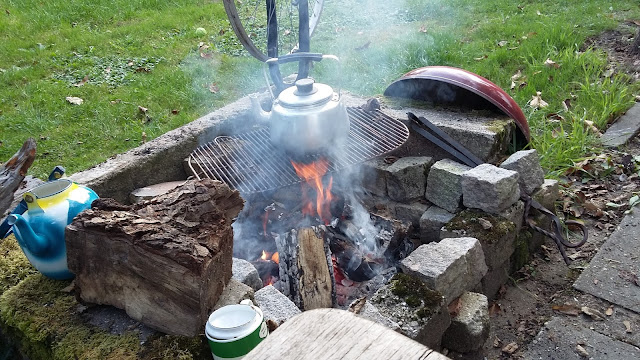change
reworking an old piece, adding Sun Moon & Stars - as a follower of Jude's latest 'class' - with lots of thread beads, for one because I love the feel of them and to me they could also represent stars, light specks, shimmering motes of stardust; the cloth was wider, too wide I felt so I cut it on both sides and added neat edges with the very thin red/white cloth, hence the blue bird lost it's tail; I also added the blue-grey sky fabric with the dyed moon and the red-white middle square with the cut-off tree-thingy on top and as I was so busy cutting away sewn on bits and restitching others, I decided to cut the middle layer away from underneath all the coloured bits as well, making it all
probably more interesting than the back of this piece is the article on woodlice lying underneath it, did you know they grind dead wood into powder so the fungi can get to work; thanks to the woodlouse's endeavours valuable nutrients from dead organic matter is rendered back into the soil so living plants can prosper; without woodlice woods would disappear or become much less diverse! Onsiscidea is the name for this group of arthropods, not insects but crustaceans, related to crabs, lobsters and shrimps. They date back 160 million years. They're constantly shedding their skin and devouring it as well, theirs is a peaceful life: eat, sleep, shed repeat.
Imagine my surprise when I discovered just how many synonyms there are in the English language for such a small creature:
pill bug
woodlouse
armadillo bug
cheeselog
doodlebug
monkeypea
roly-poly
potato bug
roll up bug
slater
sow bug















Comments
it is to work with cloth...i LOVE it, Saskia, i really LOVE it and love
that you sat there and wrote it
the Cloth its SELF is very very GRAND, and how it came to be that way
is just something for my Heart
then, you add the bugs, their doings, at first i never would have
related them to the beings i have here...but .....EEEEEEEEEEEEEE
they are the SAME!!!!!!!!!!!!!!!!!
all those creatures i have here by the billions...you have TOO!!!!!!!!!!!
all the wondrous workings there is going on all day every day, here and
in your Place TOOOOOO!!!!!
Oh, just JOY. Joy. JOY. Joy. joy. joy and more
Grace I have added to the post in repsonse to your comment, as I made a mistake in the counting of layers!
the article titled 'Ode to the Woodlice' is from the magazine Natura, I receive it as I am a member of the Dutch Society for Field Biology (KNNV). One of the sources mentioned is in English: Woodlice, S.L.Sutton, 1980 Pergamon Ltd. if you're interested in more reading
ha Jan, I like it too; all those different names for such a small Being